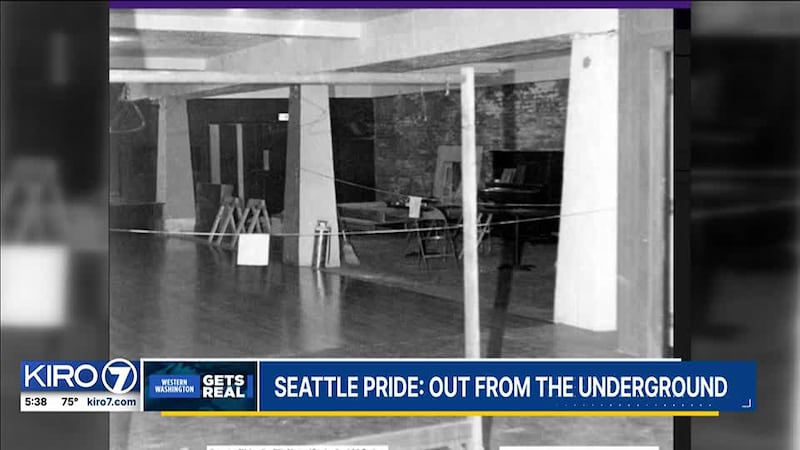SEATTLE — A story of Seattle’s oldest neighborhood that you’ve likely never heard. Turns out the much of that history is hiding in plain sight.
You can be forgiven if you don’t know the gay community’s rich history in Pioneer Square. Most of us think of Capitol Hill when we think of Seattle’s queer community.
It turns out Seattle’s first neighborhood was indeed it’s first ‘gay-borhood.’
The origins of Pioneer Square’s queer history are way down into the Seattle underground.
“The underground actually gave safe spaces to queer people to be themselves,” said Terrilyn Johnson.
Johnson is an owner of Beneath the Streets, a walking tour whose very location is part of that hidden queer history.
“This was Seattle’s first gay community center in 1971,” Johnson said, beginning the tour, “down here in the underground at 102 Cherry Street. Four men founded it. And their vision was to have a place, that wasn’t a bath house or a bar, which pretty much where a lot of the queer people were able to meet and socialize back then.”
Leaving the underground space is a metaphor, of sorts.
“Exactly, we’re now coming up and out,” said Johnson. “We don’t have to hide in the shadows anymore. We can be out and free in Seattle. In Pioneer Square, oldest part of town, birthplace of Seattle, the gayborhood, the whole bit.”
The tour turned to 2nd Avenue.
“Second (Avenue),” exclaimed Johnson. “It was the main drag, pun intended, I guess. I wanted (to) point out the spikes over here on the railing. This is very interesting.”
She walks to a blue railing at 2nd and Cherry.
“So, these spikes are put here by some officers in the Seattle Police department,” Johnson said. “They’re to prevent cruising. So, a young man, maybe older, might want to sit up here, and catcall at the other young boys going by. But the spikes were a preventative measure.”
Did they work? “Probably not to the degree they had hoped,” said Johnson, smiling. “Sometimes, I make a salacious comment. But we’re on TV. And I’m not going to do that right now. We’ll save that for the tour.”
Then to the Smith Tower.
“Yeah, there was a bar in the underground (in the basement of the Smith Tower) called the ‘Submarine Room,’” said Johnson. “In the early ‘70s, it was a gay bar. They did drag shows and performances, drinking and dancing and all of the things one would do at a bar.”
There was the Mocambo also known as “The Mo” in what is now the Frye Hotel apartments.
And there was Occidental Avenue.
“On the corner over here was the Dollhouse Tavern,” said Johnson, pointing to the storefronts that no longer exist. “You had the Trojan Shield, a gay bar, the Stagedoor, a gay bar. And at the end of this block was the Atlas Steam Baths. The bath house scenes were all over this neighborhood.”
So, it is fitting that the Emerald City’s very first Pride event was held here, too, exactly 50 years ago.
“Right now, there’s nothing to tell you this is a historical space,” said Patti Hearn.
Hearn is Seattle Pride’s new executive director.
“But we’re working right now with the Alliance for Pioneer Square to put in a historical marker as part of the trail-to-treasure program,” said Hearn. “So, when you walk through Pioneer Square or visitors come to Seattle, they can see a marker about that first day in 1974.”
A history soon to be out, for all to see.
Sky high rents largely drove members of Seattle’s gay community out of Pioneer Square in the 1970s. They relocated to what was then much-more-affordable Capitol Hill.
©2024 Cox Media Group








